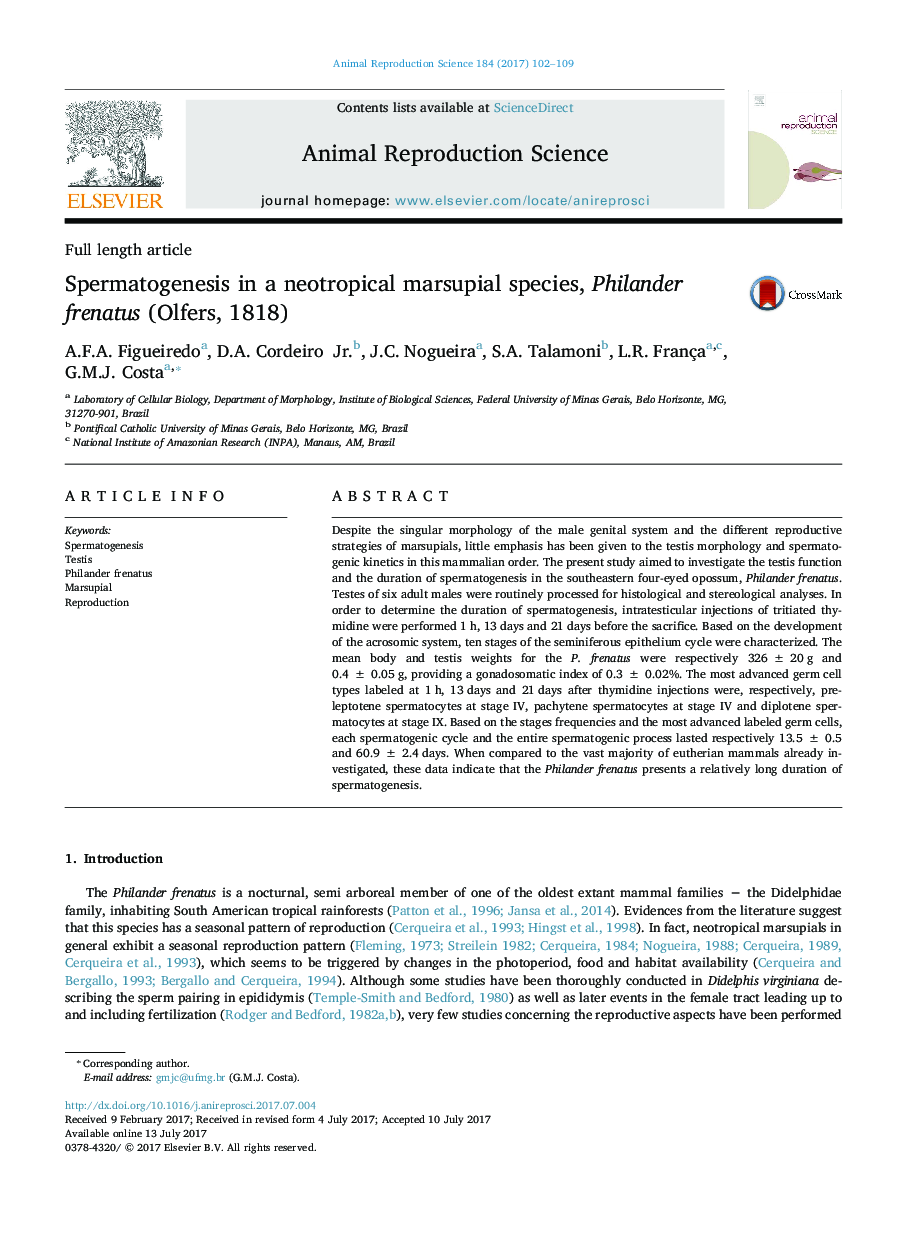| Article ID | Journal | Published Year | Pages | File Type |
|---|---|---|---|---|
| 5520233 | Animal Reproduction Science | 2017 | 8 Pages |
â¢Ten stages of SEC based on the acrosomic system in P. frenatus were characterized.â¢P. frenatus exhibited similar pre and post-meiotic phase frequencies.â¢The duration of spermatogenesis in P. frenatus lasted approximately 61 days.
Despite the singular morphology of the male genital system and the different reproductive strategies of marsupials, little emphasis has been given to the testis morphology and spermatogenic kinetics in this mammalian order. The present study aimed to investigate the testis function and the duration of spermatogenesis in the southeastern four-eyed opossum, Philander frenatus. Testes of six adult males were routinely processed for histological and stereological analyses. In order to determine the duration of spermatogenesis, intratesticular injections of tritiated thymidine were performed 1 h, 13 days and 21 days before the sacrifice. Based on the development of the acrosomic system, ten stages of the seminiferous epithelium cycle were characterized. The mean body and testis weights for the P. frenatus were respectively 326 ± 20 g and 0.4 ± 0.05 g, providing a gonadosomatic index of 0.3 ± 0.02%. The most advanced germ cell types labeled at 1 h, 13 days and 21 days after thymidine injections were, respectively, preleptotene spermatocytes at stage IV, pachytene spermatocytes at stage IV and diplotene spermatocytes at stage IX. Based on the stages frequencies and the most advanced labeled germ cells, each spermatogenic cycle and the entire spermatogenic process lasted respectively 13.5 ± 0.5 and 60.9 ± 2.4 days. When compared to the vast majority of eutherian mammals already investigated, these data indicate that the Philander frenatus presents a relatively long duration of spermatogenesis.
